Masquerade Ball History, Costumes, Aesthetics, Definition, and Meaning
Everyone can picture a masquerade ball: a luxurious party where women and men dress in their finest gowns and suits donning unforgettable masks that cover all or parts of their faces. The refined yet mysterious event is truly enhancing. For one night, anyone is able to transform into someone else.
What defines a masquerade ball beyond masks? When was the first masquerade ball? Let’s dive in and discover what’s behind the mask.
How Did Masquerade Balls Start?
Masquerade balls first originated in the 15th century during the “Carnival Season,” a Christian holiday season that occurred annually during February or early March, immediately before Lent.
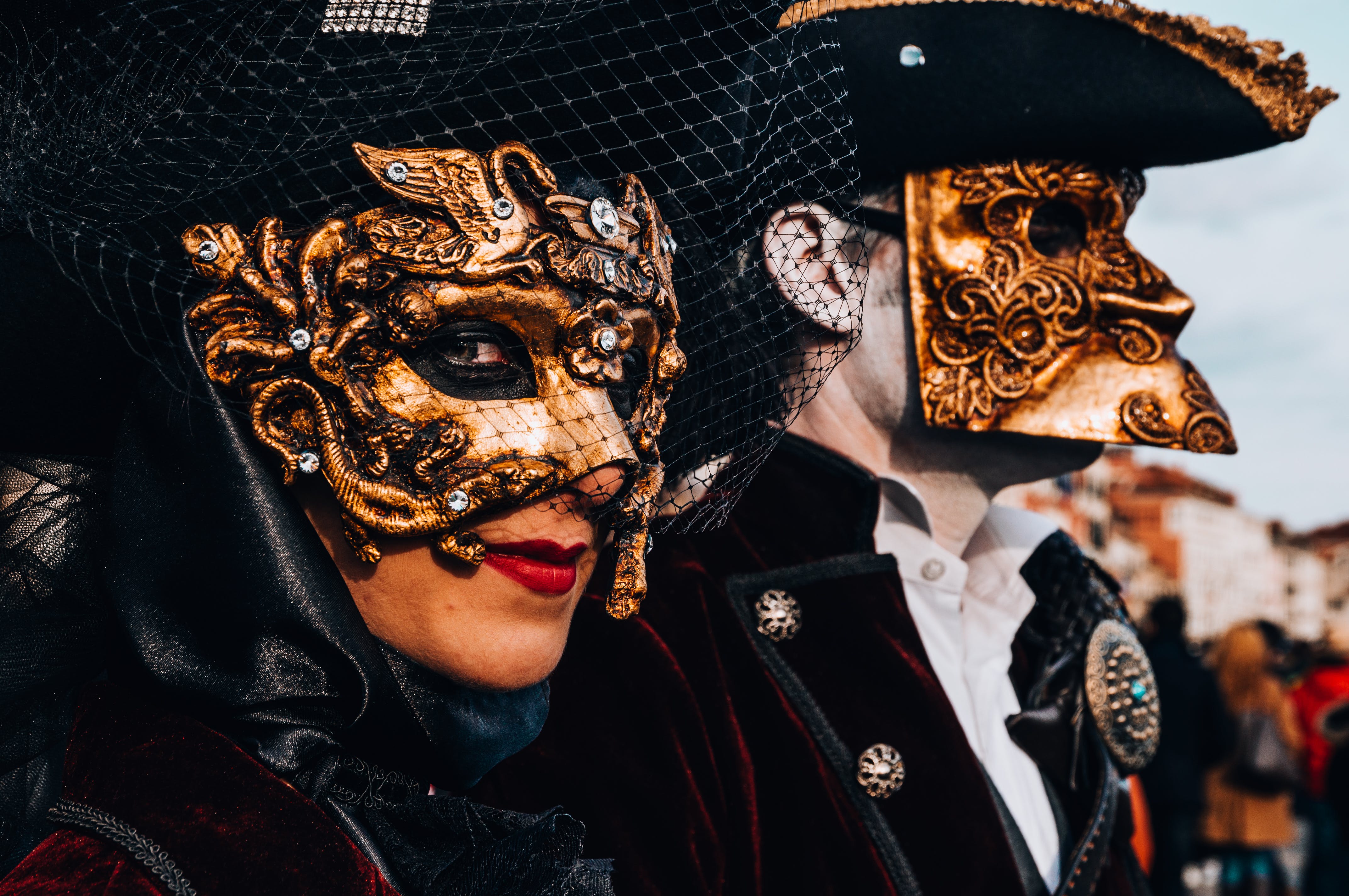
Source: Helena Jankovičová Kováčová/Pexels
While Lent was the season of solemn and sacrificial religious observation, Carnival was a time of indulgence. The celebration involved elaborate public displays like parades, festivals, and outdoor parties. These Carnival costume parties are where the masquerade ball first originated.
The Masquerade Definition
A significant element of Carnival is the masquerade meaning, symbolizing the temporary suspension of societal norms and the embrace of playful anonymity. This idea was adopted to masquerade balls, where everyone concealed their identities behind masks and elaborate costumes.
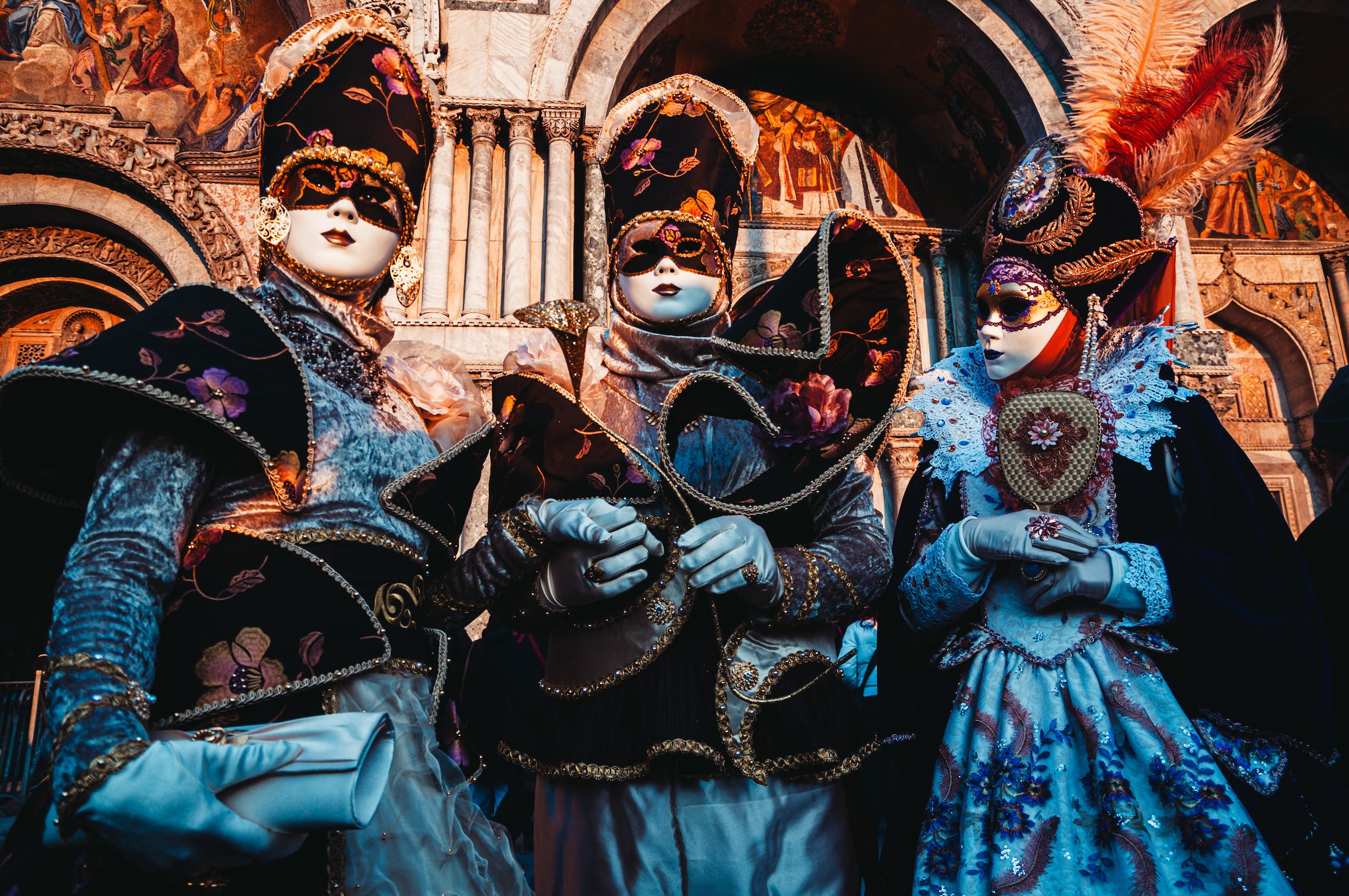
Source: Helena Jankovičová Kováčová/Pexels
Today, masquerade parties are still held as a way to have fun and celebrate special occasions, like a masquerade prom theme.
The First Masquerade Ball
One of the first recorded masquerade balls was the “Bal des Ardents” or “The Burning Men’s Ball.” Held in 1393 by Charles VI of France, the party celebrated a high-profile marriage that took place in his kingdom.

Source: The British Library/Wikicommons
The celebration included men wearing elaborate costumes made from flammable materials. They danced near flaming torches that lined the dance floor and would catch the costumes on fire if they danced too close to the edge.
How Did Masquerade Balls Become Popular?
Masquerades quickly spread like wildfire from France. By the 15th century, masquerade balls were a fixture of royal society in parts of Europe that had a large Christian population.
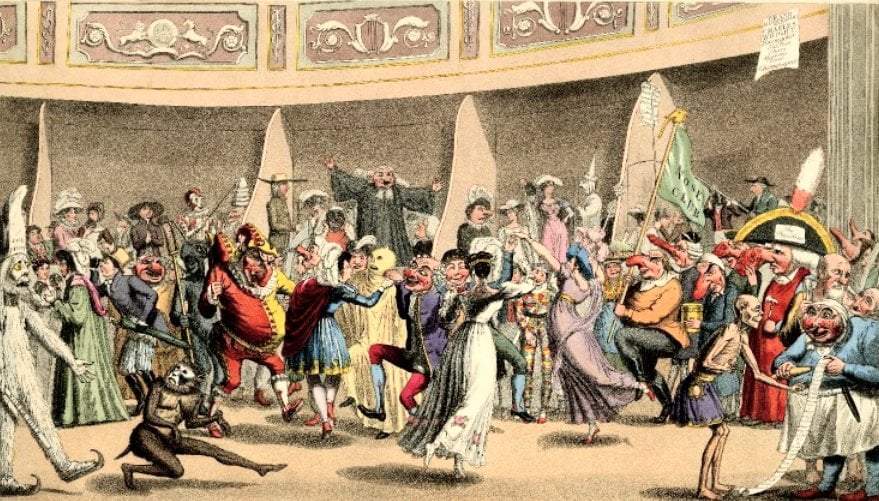
Source: British Museum
During the 16th century, masquerade balls became an important fixture in Italian high society during the Renaissance period. While masquerade balls were popular across the entire country, the masked ball was infamous in the Italian city of Venice.
The Iconic Venetian Masquerade Balls
While the exact origins of the Venetian masquerade balls are somewhat shrouded in mystery, these balls became an important tradition during the 16th and 17th centuries.

Source: Walks Of Italy
Members of the Venetian aristocracy, laborers, and everyone in between enjoyed these decadent parties during the Venetian Carnival. With their identities concealed, those who wished to escape from the constraints of social class or engage in forbidden activities were liberated.
Why Do People Wear Masks at Masquerade Balls?
Masks were incredibly beautiful and ornate but weren’t worn without purpose. Masks were made to conceal a person’s identities so they could escape the constraints of everyday life. Masks also created a sense of anonymity and mystery, which added to the excitement and allure of the balls.

Source: Magda Ehlers/Pexels
The beauty of the masks became a form of wearable art. The masks often featured intricate designs, feathers, jewels, and other embellishments.
What Do You Wear to a Masquerade Ball?
If you are wondering what to wear to a masquerade party, then we’ve got you covered. According to Wardrobe Shop, there are seven different types of traditional masquerade masks: Columbina, Bauta, Volto, Arlecchino, Dottore Peste, Pulcinella, and Pierrot.

Source: Public Domain/PickPik
The Volto is a mask that covers the entire face and is worn by both men and women. The three-dimensional nature of the nose and mouth made it a comfortable option that completely hides the wearer’s identity.
The Perfect Masquerade Outfits for Females
The Colombina is a type of mask that covers the eyes, cheeks, and nose. Often decorated with jewels, feathers, intricate trim, and other adornments, the heavily decorated mask is often only worn by women.
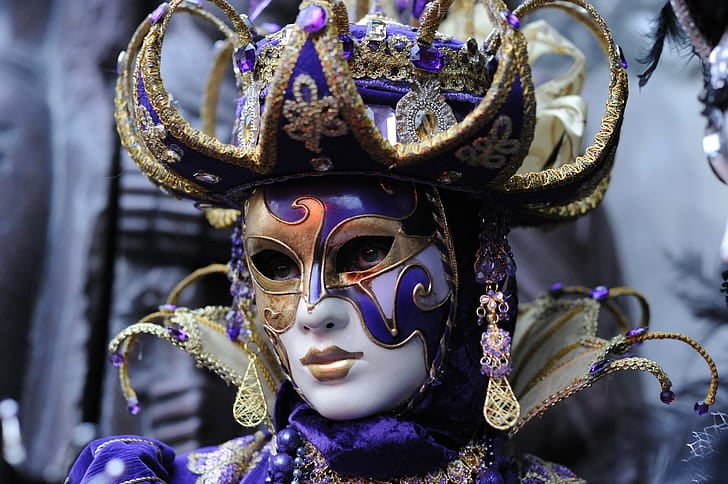
Source: Public Domain/PickPik
The Arlecchino, known also as the Harlequin mask, was incredibly colorful and attached to a large headpiece or elaborate collars. Playing on a clown-like image, the joker behind the mask was expected to wear patched clothing that was adorned with bells.
The Perfect Masquerade Outfits for Males
The Bauta is a masculine mask that includes sharp edges and squared jawlines. Although the mask is traditionally thought to be adorned with intricate metalwork, plain versions of this mask were often worn by Italian politicians, especially during periods of voting or decision-making.

Source: Public Domain/PickPic
The famous mask of the Venetian masquerades is the Dottore Peste, also known as the “Plague Doctor” mask as a French physician named Charles de Lorme wore this type of mask when treating plague patients in the 16th century. This half-mask features eye holes as well as a large, beak-like protrusion at the nose.
Two Other Odd Traditional Masquerade Masks
While the Pulcinella is similar to the Dottore Peste with its “beaked” nose, the mask only covers the wearer’s eyes. The mask is usually dark in color and plain and is traditionally worn with loose-fitting black overalls.
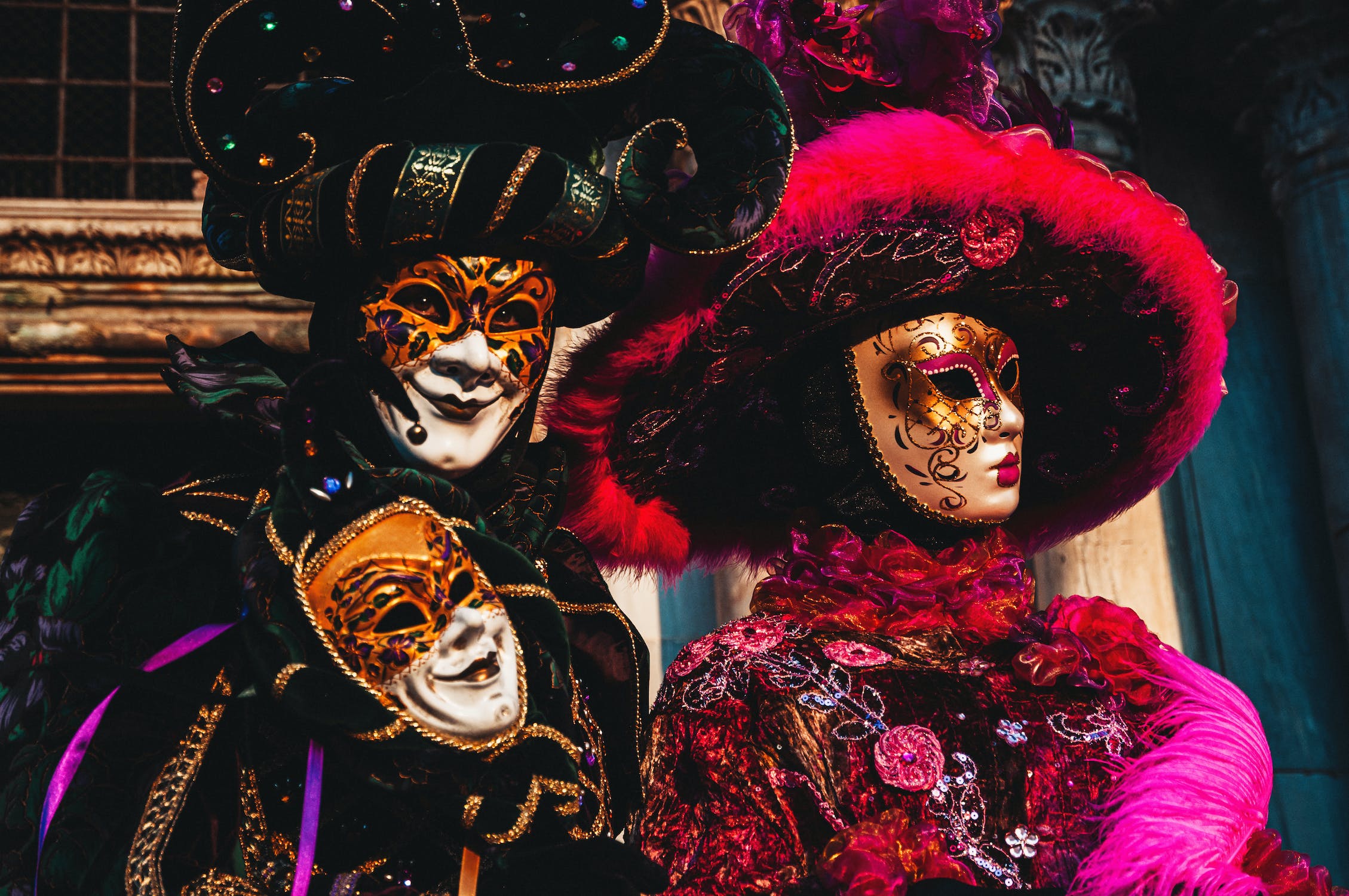
Source: Source: Mikhail Nilov/Pexels
The Pierrot is another full-coverage mask that offers a clown-like presentation without the bells. It is all-white in color with a tear on its cheek and a sad look and represents a melancholic romantic.
Masquerades in Movies
Masquerades in movies and television shows are often used as a plot device to hide characters’ identities from each other to create tension. Some of these masquerades in movies and TV shows include “Romeo and Juliet,” “Another Cinderella Story,” “Eyes Wide Shut,” and “Marie Antoinette.”
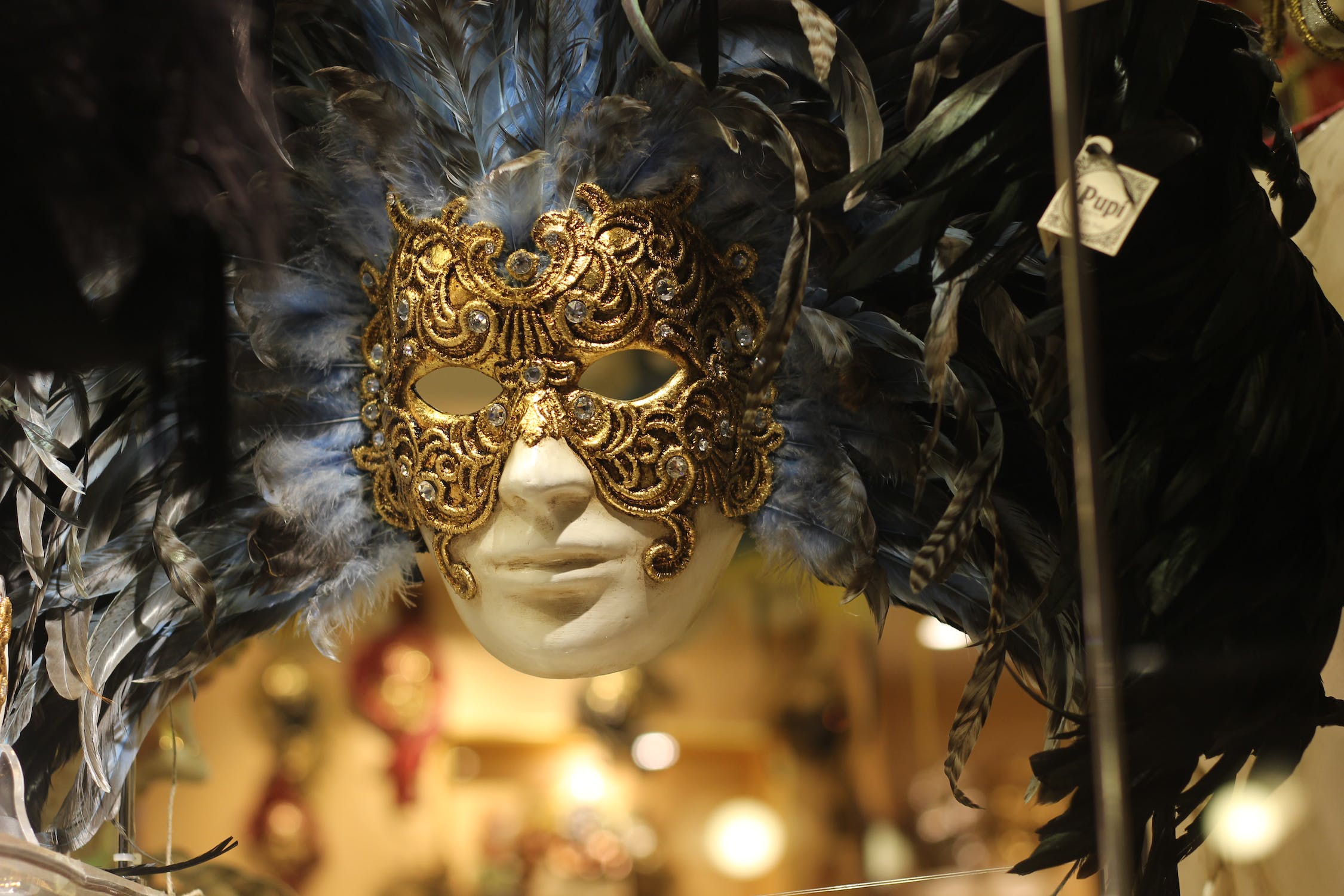
Source: Carolina Spork/Pexels
Most everyone is familiar with the elaborate masquerade sequence in the Broadway musical, “The Phantom of the Opera,” which sets up the rest of the events in the rest of the story’s operatic drama.
Masquerades in the Modern Era
Masquerade balls declined in popularity in the modern era. The decline of the aristocracy and the rise of Puritanism, which emphasizes strict moral codes and personal discipline, led to the eventual decline of masquerade balls.
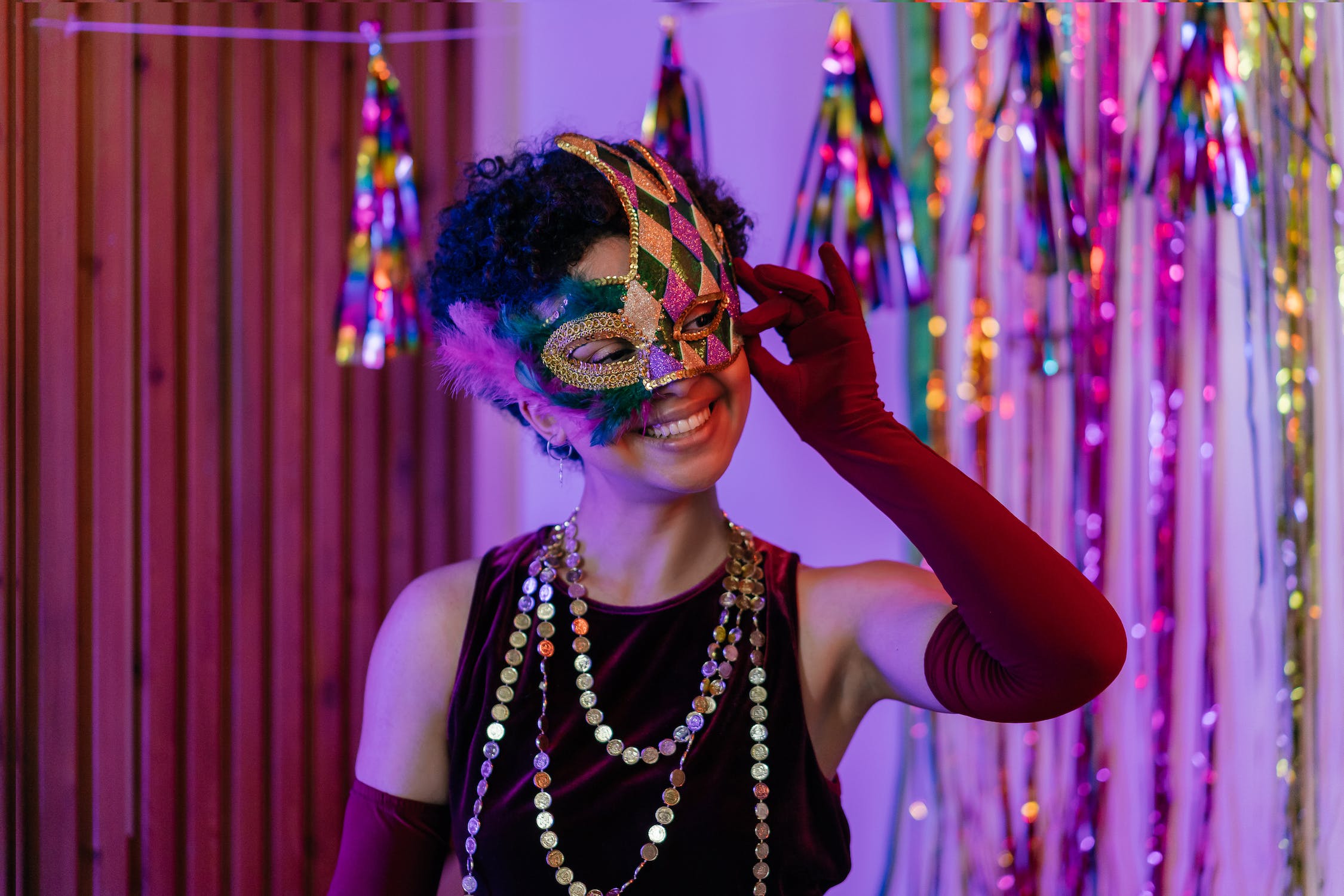
Source: Mikhail Nilov/Pexels
However, masquerades continue to be held in Venice and other parts of the world, including New Orleans during Mardi Gras and are still seen as a symbol of mystery, intrigue, and escapism.
How to Plan a Modern Masquerade Party
If you are looking to throw a masquerade ball yourself, there are traditional elements, such as bright colors, oddities, Carnival themes, literary characters, enchanted forests, and ancient civilizations that you can draw from when telling guests to plan their costumes.

Source: Bruce Mars/Free Range Stock
Update the traditional mask with a fresh, contemporary mask that only covers the lower half of your face. Feel free to bring traditional elements into the modern-day while dressing in your finest outfits to dance the night away.
